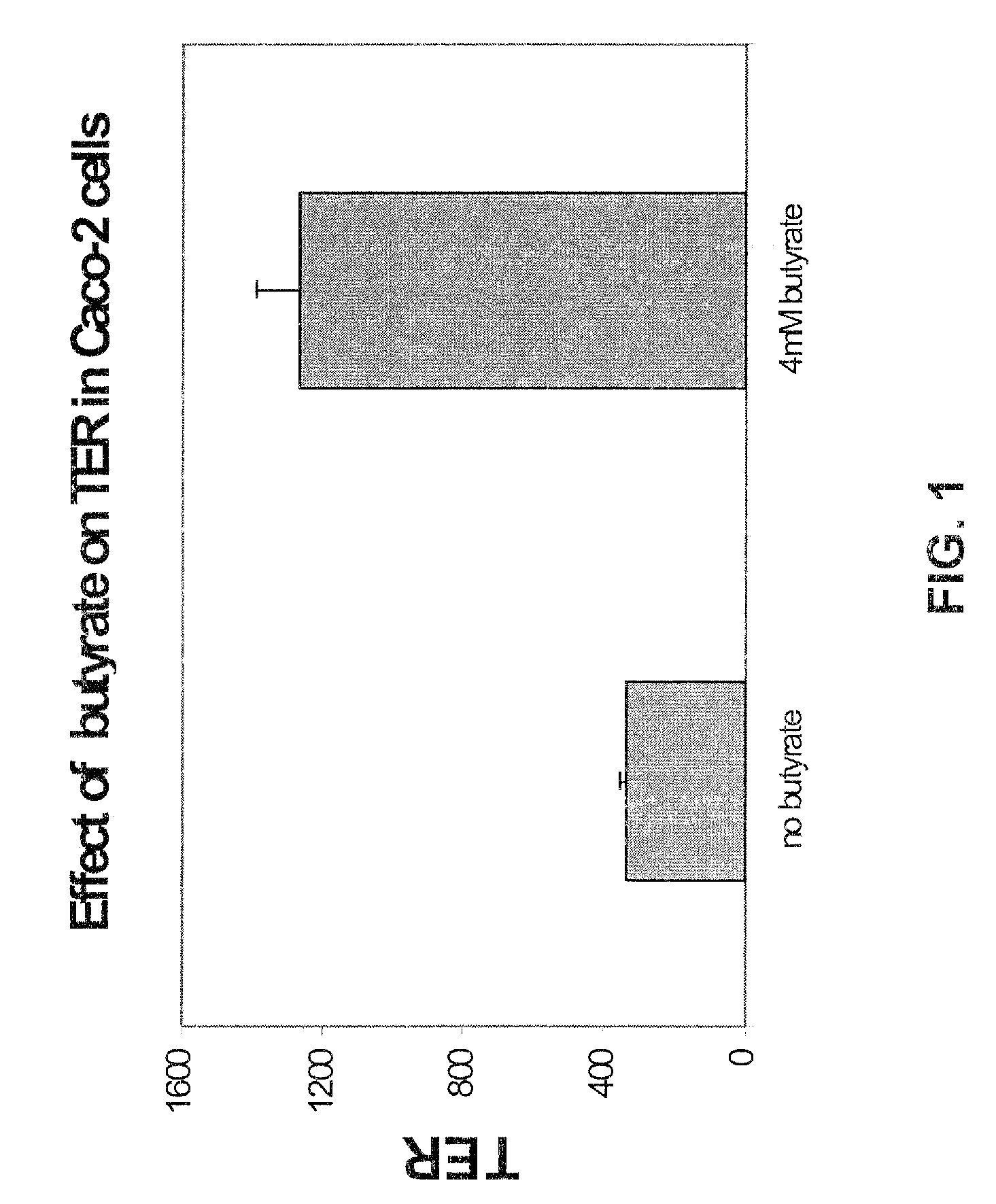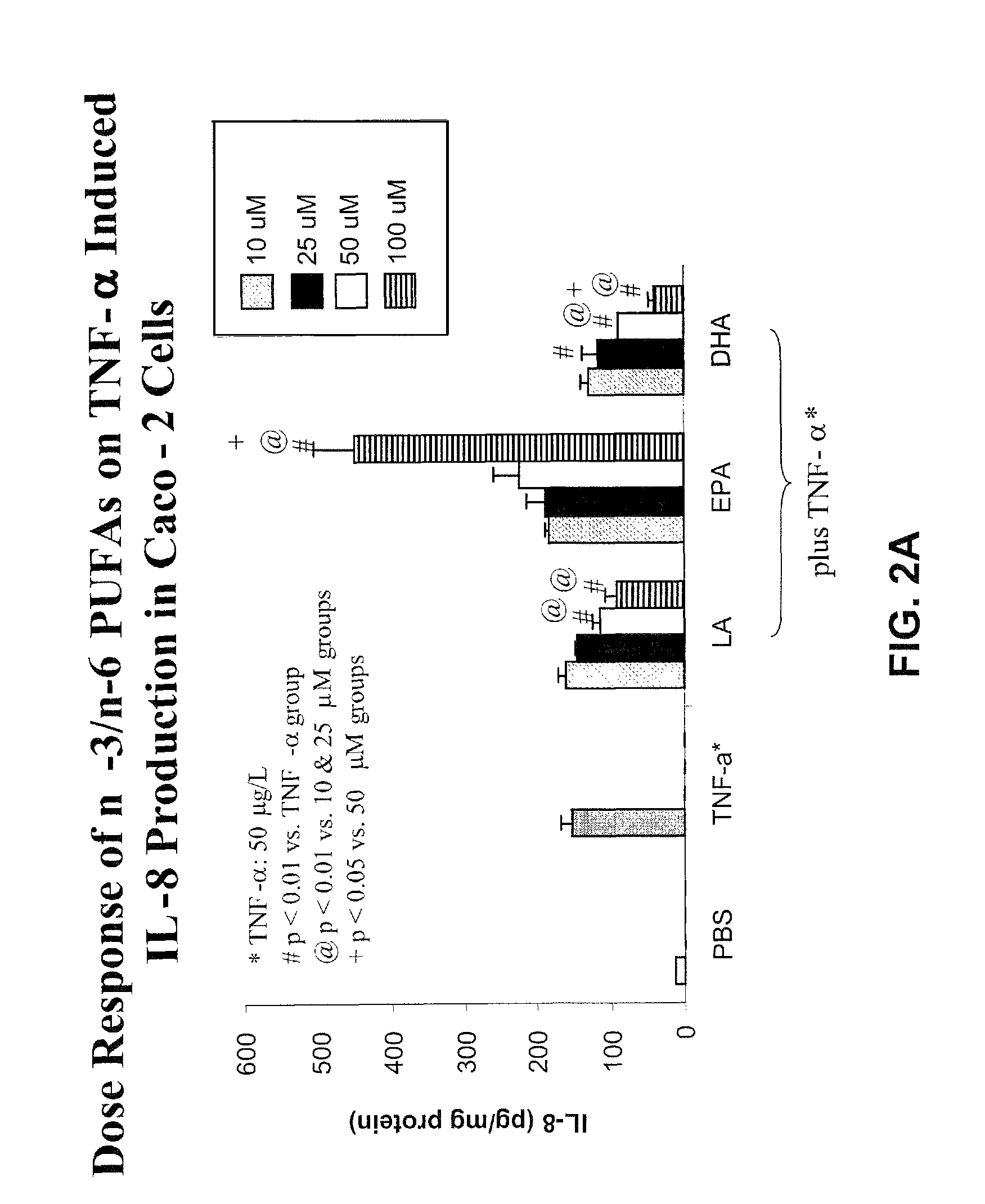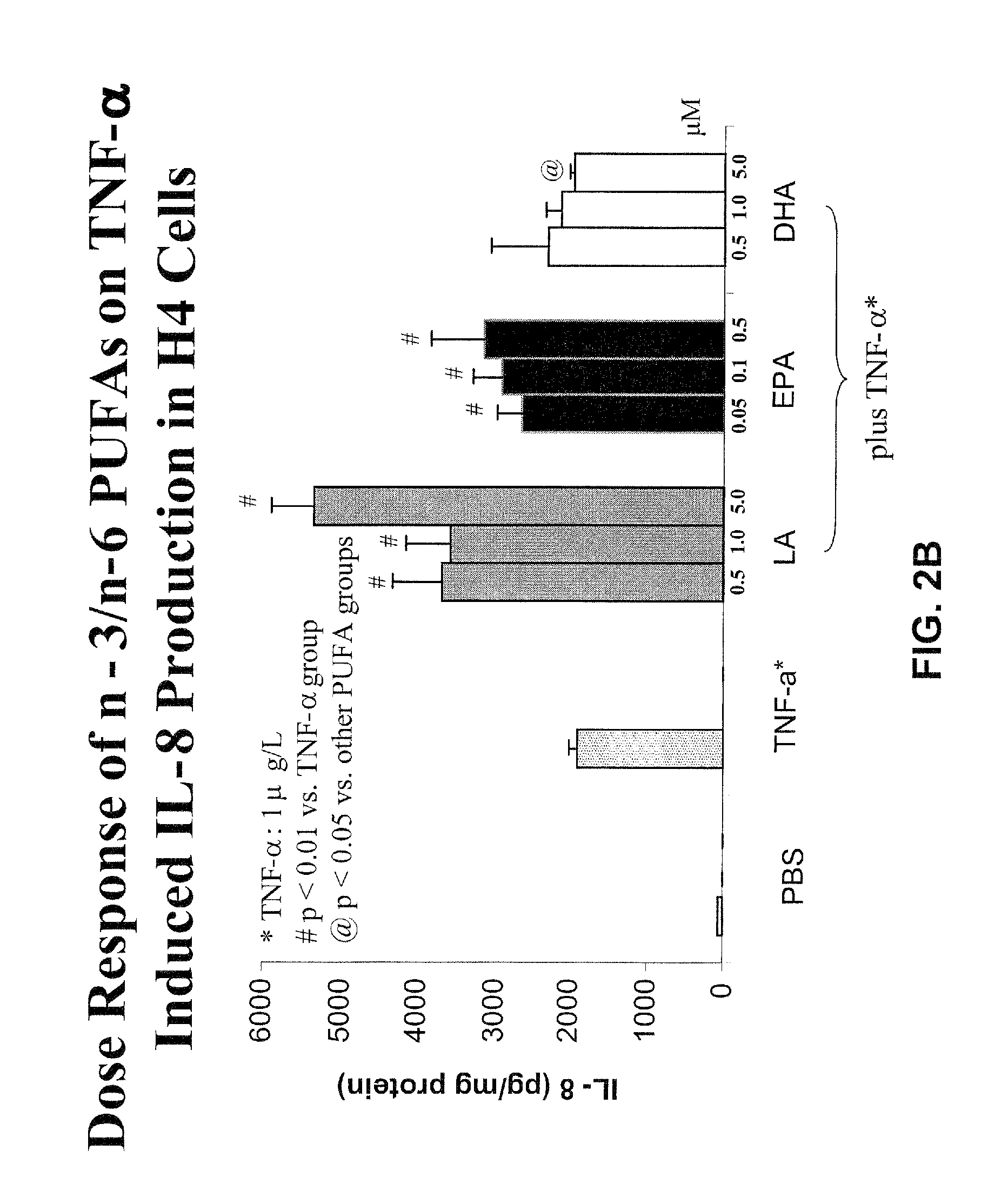Formulation to improve gastrointestinal function
a formulation and gastrointestinal technology, applied in the field of formulation to improve gastrointestinal function, can solve the problems of low gastrointestinal function, low gastrointestinal function, and low gastrointestinal function, and achieve the effects of reducing gastrointestinal cinc, reducing cinc mrna, and significantly increasing intestinal cin
- Summary
- Abstract
- Description
- Claims
- Application Information
AI Technical Summary
Benefits of technology
Problems solved by technology
Method used
Image
Examples
example 1
[0059]The nutritional value of GLN may be influenced by the highly polarized nature of the mucosal epithelium such that GLN provides a nutritional advantage when the same concentrations are provided apically or basally. Apical versus basal GLN uptake kinetics were compared and found not to differ significantly or result in significant differences in differentiation. It was found that the absence of GLN (no GLN added to the media and GLN synthetase inhibition) caused a significant decrease in transepithelial resistance (TER) and increase in permeability.
[0060]A similar effect was seen in vivo. In Caco-2 cell culture, the effect of GLN deprivation was most marked when GLN synthetase (GS) was also inhibited, but could also be elicited without GS inhibition when the cell cultures were stressed with media change.
[0061]Differentiation of Caco-2 cells as evaluated with alkaline phosphates activity was also markedly dependent on GLN. When GLN synthetase activity was inhibited with MS, gluta...
example 2
The Effects of GLN and Glutamate on Caco-2 Cell Intercellular Junction Morphology and Tight Junction Proteins
[0063]Using the “pup-in-a-cup” rat model, protein deprivation and supplementation with GLN or GLU in the developing rat small intestine were examined. Four groups of 6-7 d old pups were fed via a gastrostomy tube providing 100% or 25% protein (relative to mother fed rats) rat milk substitute (RMS) with and without additional GLN or glutamate (GLU) for 6 d. Pups receiving the 100% protein RMS experienced better growth than the 3 groups of pups receiving the 25% protein RMS+ / −GLN / GLU supplementation. Thus, better growth can be achieved with enteral protein supplementation, and neither GLN nor GLU alone can rescue the effects of protein deprivation.
[0064]Villus size is a major component of absorptive capability. Villus height and area were greater in pups receiving the 100% protein RMS compared to 3 groups given the other RMS formulas, whereas villas height and area did not diff...
example 3
Effect of High Protein Diet on Tight Junction Proteins
[0065]The tight junction proteins play an integral role in paracellular permeability of the intestinal barrier, and two of these, claudin and occludin were evaluated using Western blotting. Tight junction protein claudin-1 was significantly higher in the group fed the 100% protein diet, while occludin did not differ among the 4 groups.
PUM
| Property | Measurement | Unit |
|---|---|---|
| neonate weights | aaaaa | aaaaa |
| composition | aaaaa | aaaaa |
| Morphology | aaaaa | aaaaa |
Abstract
Description
Claims
Application Information
 Login to View More
Login to View More - R&D
- Intellectual Property
- Life Sciences
- Materials
- Tech Scout
- Unparalleled Data Quality
- Higher Quality Content
- 60% Fewer Hallucinations
Browse by: Latest US Patents, China's latest patents, Technical Efficacy Thesaurus, Application Domain, Technology Topic, Popular Technical Reports.
© 2025 PatSnap. All rights reserved.Legal|Privacy policy|Modern Slavery Act Transparency Statement|Sitemap|About US| Contact US: help@patsnap.com



